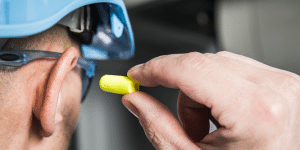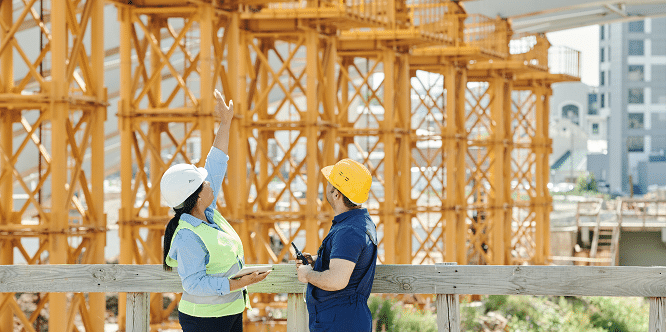This information is provided for educational purposes only. Reader retains full responsibility for the use of the information contained herein.
A drug-free workplace is just one part, albeit an important part, of a broader vision of establishing and maintaining a workforce that is fit to work. As such, drug testing is just one part of a company’s efforts to achieve that vision.
Clearly, how employers establish a drug-free workplace is in a state of flux. For example, in a 2022 survey of drug-testing providers conducted by the Current Consulting Group, 15% said “too many” clients had dropped marijuana from their drug-test panel and another 7% said they were anticipating clients choosing to no longer test for marijuana. Yet, according to numerous sources, including the federal government, marijuana use continues to increase across the country as more states legalize cannabis.
According to the latest report from the Substance Abuse and Mental Health Services Administration (SAMHSA), marijuana use increased from about 48 million Americans in 2020 to just over 52 million in 2021.
The Washington Post, citing a study by the University of Michigan, reported that marijuana use among young people was up from 29% in 2011 to 43% in 2021. The report also said 28% of young people said they used marijuana in the past month and “more than 1 in 10” were daily users.
Quest Diagnostics reported in 2022 that marijuana positivity rates for workplace drug testing increased 8.3% between 2020 and 2021, the highest positivity rate ever reported in the company’s Drug Testing Index. Over a five-year period, positivity for marijuana in the general U.S. workforce increased 50% (2.6% in 2017 versus 3.9% in 2021). Marijuana positivity between 2012-2020 has surged 118.2% in states with legal recreational laws.
More drug use, overall. More marijuana use, specifically. More employees and job applicants testing positive. And fewer employers testing for marijuana. What could the possible ramifications of these converging trends be?
Drug Abuse and Workplace Accidents
One employee screening company analyzed drug test results from their vast client base and identified two interesting trends, which were highlighted in a special report entitled “Pre-Employment Drug Screening Correlated to Lower Post-Accident Drug Screening Positivity”:
1) “Some customers facing open front-line positions and staffing shortages opted to pause their pre-employment drug screening programs to get candidates onboarded faster, and
2) “… during this same period, nearly all industries saw an increase in positive results from post-accident drug testing.” In other words, the drop in pre-employment drug testing meant companies were likely hiring more drug users. The increase in post-accident positive drug test results tells us these substance-abusing new hires were having a definite negative impact on workplace safety.
Quoting from the report: “When post-accident drug positivity for clients who do pre-employment drug screening is compared to that of clients who do not, the rate of change is pronounced. Clients that performed pre-employment drug screening experienced a 17% increase in post-accident positivity rates from 2019 to 2020; meanwhile, clients that did not perform pre-employment drug screening saw their post-accident rates more than double from 2019 to 2020.”
That means a growing percentage of the workforce is unfit to work. And while drug abuse plays a big part in that, it’s not the only fitness factor employers should consider. Tests and exams specifically meant to determine an individual’s fitness to work are growing in popularity.

Looking for a provider to service your needs in Texas?
SureHire has a large network of testing facilities in the US, including a one-stop shop to service the Midland-Odessa Area.
Contact us to speak with a member of our team today!
Fitness-to-Work
What is Fitness-for-Duty or Fitness-to-Work testing and how does it factor into a company’s efforts to maintain safe, healthy, and productive workers? SureHire Occupational Testing, a leading provider of fitness-for-duty and drug testing services in both the United States and Canada, offers the following definition:
“Fitness-to-Work testing is a medical assessment done when an employer wishes to be sure an employee can safely do a specific job or task. The testing is typically performed by a healthcare provider who will evaluate the testing participant on their overall physical function and health status, to determine if they have the necessary strength and conditioning to perform the critical work tasks of their role.”
SureHire further explains that Fitness-to-Work testing will typically involve the following components:
“Collection of vitals: this component includes collecting the testing participants’ vitals such as blood pressure, heart rate, oxygen saturation, height, and weight. This component is an important safety measure during testing to ensure the individual is not exhibiting any immediate safety concerns or red flags to completing testing.
Comprehensive health interview: this component focuses on understanding the testing participant’s overall health and medical status, to rule out any serious medical conditions or illnesses that could pose a risk to them while performing their work tasks, or to completing the physical fitness component of their Fitness-to-Work test.
Comprehensive musculoskeletal examination: this component focuses on examining the testing participant from head-to-toe; evaluating their muscles, joints and connective tissue (such as ligaments and tendons) to ensure they are all functioning properly. Any findings identified during this component of the testing can play a role in recommendations for workplace modifications or accommodations that might be suitable for the individual.
Physical fitness evaluation: this component looks at the individual’s overall strength and cardiovascular capabilities, relative to the physical demands of their role. Testing participants will complete various tasks (such as lifting and carrying) in different positions or scenarios, to allow the evaluator to get a sense of their overall lifting technique, strength and conditioning capabilities.”
From this comprehensive evaluation, results are reviewed by a team of SureHire-trained healthcare professionals, including physiotherapists, chiropractors, athletic therapists, and physicians. The results of Fitness-to-Work testing are issued using a level 1-5 scale. Depending on the result issued, SureHire may recommend work accommodations and/or restrictions related to the findings noted during testing.
Does a Fitness-to-Work program work?
Does a Fitness-to-Work program produce a return-on-investment worth pursuing? Consider the following from SureHire: “Based on a recent study, a client in the Industrial Construction industry saw a 78% decrease in the total number of injuries, an 80% decrease in lost time claims, and a 94% decrease in their total claim costs after implementation of SureHire’s Fitness-to-Work program.” Safer, healthier workers means lower costs and higher productivity, all of which translates into a significant positive impact on a company’s bottom line.
Conclusion
In today’s ever-increasing litigious environment and the growing rate of substance abuse among workers, Fitness to Work evaluations make good business sense from both a financial and legal perspective. Pre-employment drug testing has proven to be an effective means of identifying substance abusers who are more likely to cause costly and potentially harmful workplace accidents, but other health-related factors cannot be ignored, especially in safety-sensitive industries like oil & gas, transportation, and construction.
In Current Consulting Group’s 2022 industry survey, in response to the question “In the future, will drug testing be replaced by some other screening method?” 19.3% said “yes” but not entirely while 6.3% said “yes” with non-drug-related impairment fitness-for-duty testing. Time will tell, but Fitness to Work evaluations that measure a person’s ability to safely perform the job tasks, which can be negatively affected by many factors including substance abuse, will very likely become an important component of a company’s comprehensive efforts to maintain safe workplaces.
© 2023 SureHire Inc. – No portion of this article may be reproduced, retransmitted, posted on a website, or used in any manner without the written consent of SureHire Inc. When permission is granted to reproduce this article in any way, full attribution to the author and copyright holder is required.
You May Also Be Interested In…
- Do You Have Reasonable Suspicion?
 Employers cannot initiate reasonable suspicion testing without first going through the 5-step process. Reasonable suspicion training provides critical information about how to initiate reasonable suspicion testing, including the 5-step process and other tools that employers can use to help manage the misuse of alcohol and drugs in the workplace.
Employers cannot initiate reasonable suspicion testing without first going through the 5-step process. Reasonable suspicion training provides critical information about how to initiate reasonable suspicion testing, including the 5-step process and other tools that employers can use to help manage the misuse of alcohol and drugs in the workplace. - An Employer’s Guide: What You and Your Employees Need to Know About DOT Drug & Alcohol Testing
 When implementing or maintaining DOT Drug & Alcohol testing, there are key areas that employers should consider.
When implementing or maintaining DOT Drug & Alcohol testing, there are key areas that employers should consider. - SureHire Occupational Testing Acquires COHR Health: A Positive Step Towards Safe, Healthy, Productive Workforces and Communities
 We are thrilled to announce that today, May 6, 2024, SureHire Occupational Testing has officially acquired COHR Health, a well-known leader in occupational health services. Read on…
We are thrilled to announce that today, May 6, 2024, SureHire Occupational Testing has officially acquired COHR Health, a well-known leader in occupational health services. Read on… - Occupational Testing Use Case – Mining
 In this case study, we will explore how mining companies can use various types of occupational tests to reduce Total Recordable Incident Rates (TRIR) long term.
In this case study, we will explore how mining companies can use various types of occupational tests to reduce Total Recordable Incident Rates (TRIR) long term. - 9 Strategies to Keep Workers Cool on Drilling Sites During Hot Summer Months
 This article delves into strategies to keep workers cool and safe on drilling sites during the hot summer months.
This article delves into strategies to keep workers cool and safe on drilling sites during the hot summer months. - Hearing Conservation Basics: How to Manage Occupational Noise
 Learn how to proactively mitigate occupational noise risks and help prevent NIHL among workers.
Learn how to proactively mitigate occupational noise risks and help prevent NIHL among workers.

